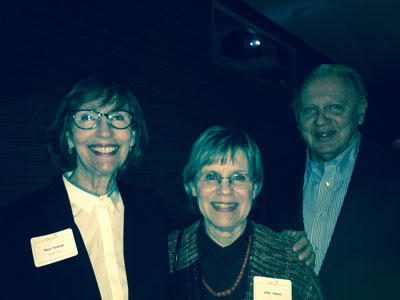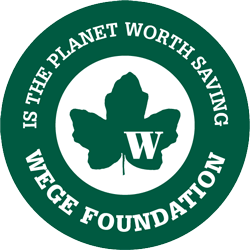Edward Burtynsky is an environmental warrior whose artistic weapon is a camera. For over 30 years, the Canadian artist has turned aerial photography—via planes, helicopters, and drones—into a graphic history of what we Homo sapiens are doing to our Earth home. His airborne cameras have photographed quarries, oil drillers, and mines, among other things, documenting man’s physical destruction of our most vital natural resource.
From now until April 26, two floors of the Grand Rapids Art Museum are filled with sixty of Burtynsky’s large-scale photographs in a powerfully designed exhibit. As one viewer put it, “I went through the entire exhibit and was fascinated, stunned, and impressed with the solemn message his artwork showed us.”
The title of Burtynsky’s show at the GRAM is Water, and his message is gripping. “Water,” he writes, “is the reason we can say its name.” The late Peter M. Wege, founder of The Wege Foundation, the Presenting Sponsor of the exhibit, said the same thing in his book ECONOMICOLOGY. “We can live without a lot of things,” Wege wrote. “Water isn’t one of them.”
Some of Burtynsky’s aerial photographs, such as a Geothermal Power Station in Mexico and Dryland Farming in Spain, have an abstract beauty despite the artist’s deadly serious message. The epiphany that led to this GRAM exhibit happened seven eight years ago when a photojournalist friend told Burtynsky about an incident that happened in an Australian bar. After his friend had paid for his beer and was leaving, the bartender ran after him and said he had to finish his glass of water before he could go.
“Suddenly, Burtynsky writes, “water took on a new meaning for me. I realized water, unlike oil, is not optional. Without it we perish.”
That revelation led to Burtynsky’s spending five years circling the globe in the sky focusing his mission and his lens on recording mankind’s misuse of water. West Michigan viewers surrounded by the five Great Lakes holding 21% of the world’s fresh water might shudder at the photographs of the Colorado River Delta ironically named as it’s been a sand lot since the River was diverted over 40 years ago. And then there’s Owens Lake, a desert since its water was siphoned off for Los Angeles in 1913.
Because of man’s technical ability to control the world’s water, Edward Burtynsky writes, “We are reshaping the Earth in ways …capable of engineering our own demise.” The artist hopes this GRAM exhibit will make viewers “think more long-term about the consequences of what we are doing.” And if we don’t pay attention, we will continue to take the water that sustains us for granted. “Until it’s gone,” Burtynsky somberly concludes.
Click here for Exhibit details



